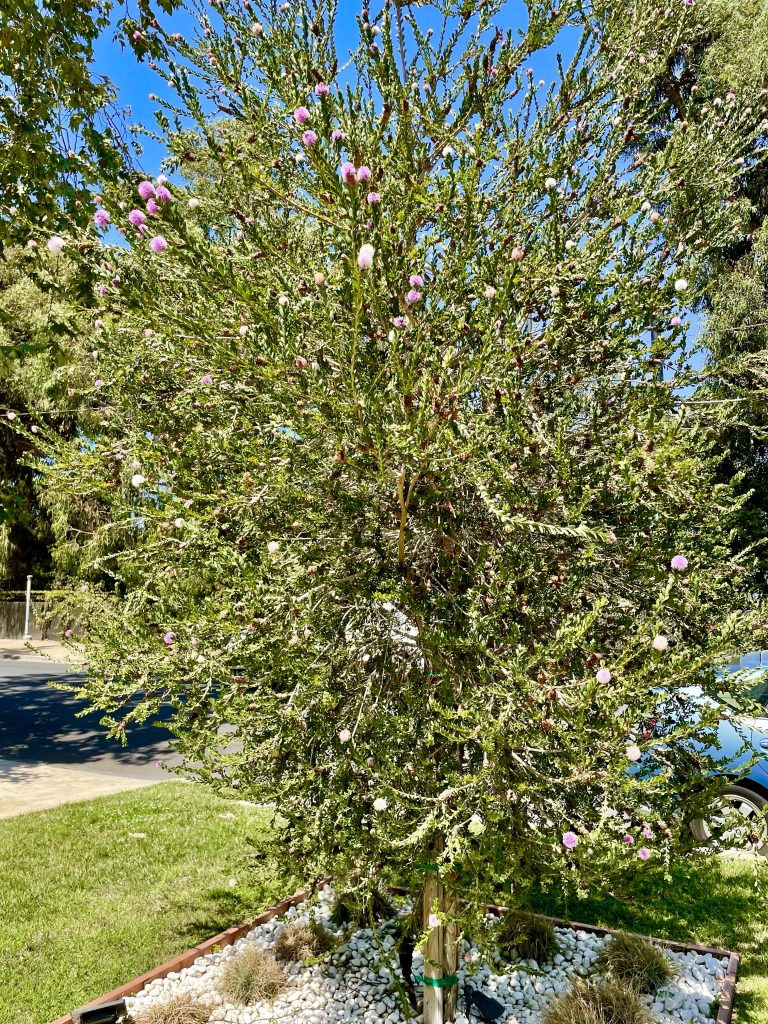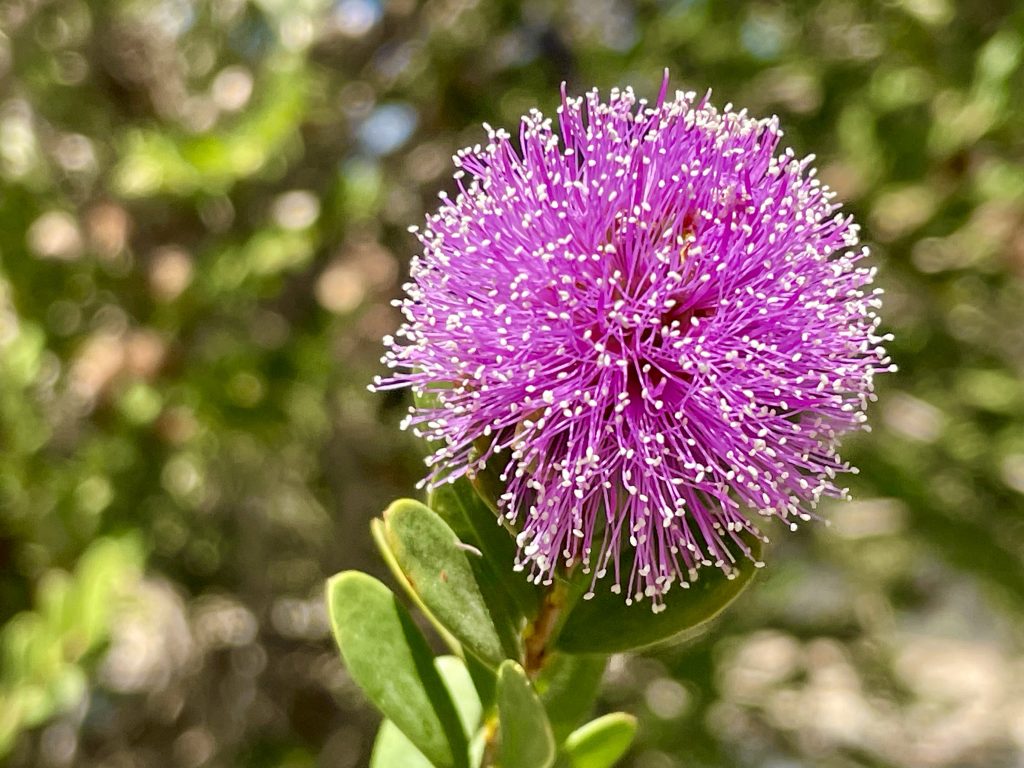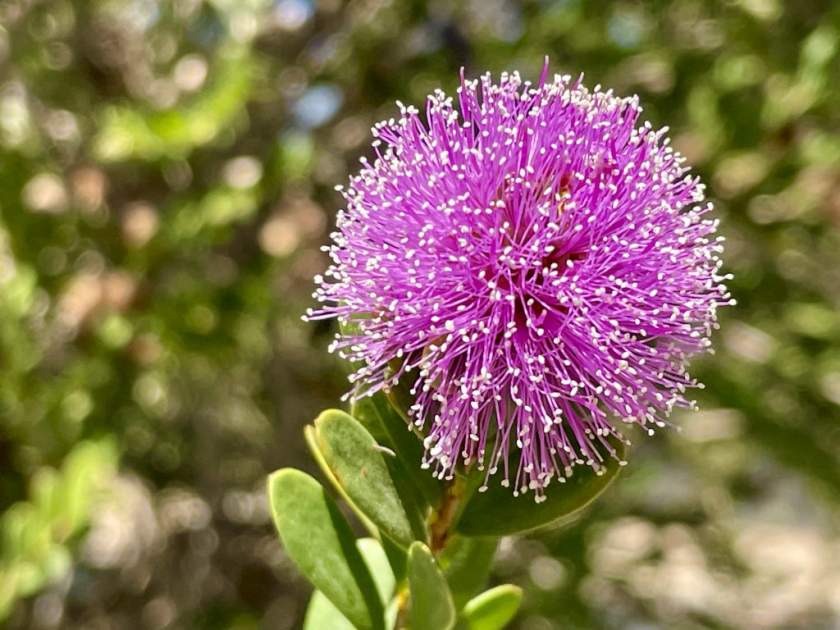Melaleuca nesophila: A Captivating Native of Western Australia
Melaleuca nesophila, also known as the Showy Honey-myrtle, Western Tea Myrtle, Mindiyed, or Pink Melaleuca, is a remarkable shrub or small tree that belongs to the Myrtaceae family, also known as the Myrtle family. Native to Western Australia, this plant exhibits stunning features and is highly valued for its ornamental appeal and ecological benefits.
Melaleuca nesophila displays a unique and attractive appearance. The bark of this species is grayish in color and peels off in thin strips, adding textural interest to its overall appeal. It forms a dense crown with twisted branches, often presenting a multi-trunked structure. As it reaches maturity, Melaleuca nesophila can grow to a height of about 30 feet or 10 meters, making it an eye-catching presence in the landscape.
The foliage of Melaleuca nesophila adds to its charm with its bluish-green hue. The leaves are approximately 2.5 centimeters or 1 inch long and emit a pleasant aromatic scent when crushed, enhancing the sensory experience of encountering this remarkable plant. However, it is the exquisite flowers that truly steal the show.
The flowers of Melaleuca nesophila are a delightful shade of pink, captivating observers with their vibrant and alluring appearance. As the flowers mature, they gradually fade to white, adding a touch of softness to the overall display. Resembling pom-poms or rounded bottle brushes, the flowers adorn the tip of the branches, creating a striking visual spectacle. Each strand of the flower cluster features a golden tip, adding a touch of brilliance and enhancing the overall aesthetic appeal of this remarkable plant.

Cultivation of Melaleuca nesophila:
To successfully cultivate Melaleuca nesophila and enjoy its beauty, consider the following guidelines:
Light Requirements: Melaleuca nesophila thrives in full sun but can also tolerate partial shade. Ensure that it receives an adequate amount of sunlight to promote healthy growth and vibrant flowering.
Soil Conditions: This species is versatile when it comes to soil preferences, as it can adapt to both moist and dry soil conditions. However, it is crucial to ensure that the soil is well-drained to prevent waterlogging, which can lead to root rot and other issues. Melaleuca nesophila is known for its drought tolerance and can withstand coastal conditions as well as desert heat.
Wildlife Attraction: Melaleuca nesophila is highly attractive to birds and bees due to its nectar-rich flowers. The presence of this plant in the garden can contribute to the well-being of local wildlife, creating a harmonious and biodiverse environment.
Pruning and Maintenance: To maintain an attractive shape and promote healthy growth, occasional pruning may be necessary. Trimming any dead or damaged branches, as well as shaping the plant as desired, can help ensure its longevity and aesthetic appeal.
Disease and Pest Resistance: Melaleuca nesophila is generally resistant to common diseases and pests, making it a low-maintenance choice for gardeners. However, it is always advisable to monitor the plant for any signs of root rot or other potential issues and take appropriate measures if necessary.
Propagation: Melaleuca nesophila can be propagated through both seeds and tip cuttings. Carefully follow recommended propagation techniques to ensure successful establishment and growth of new plants.

Melaleuca nesophila is a captivating plant that showcases the beauty and uniqueness of Australian flora. Its showy pink flowers, aromatic foliage, and intriguing bark make it a standout choice for gardens and landscapes. Whether used as a focal point, hedge, or accent plant, Melaleuca nesophila adds a touch of elegance and charm to any setting. With its adaptability to various soil conditions, resistance to pests and diseases, and tolerance to drought and coastal environments, it is a resilient and easy-to-grow plant. Its ability to attract birds and bees further contributes to the ecological value of this remarkable species. Consider incorporating Melaleuca nesophila into your garden and enjoy the captivating beauty it brings year after year.




